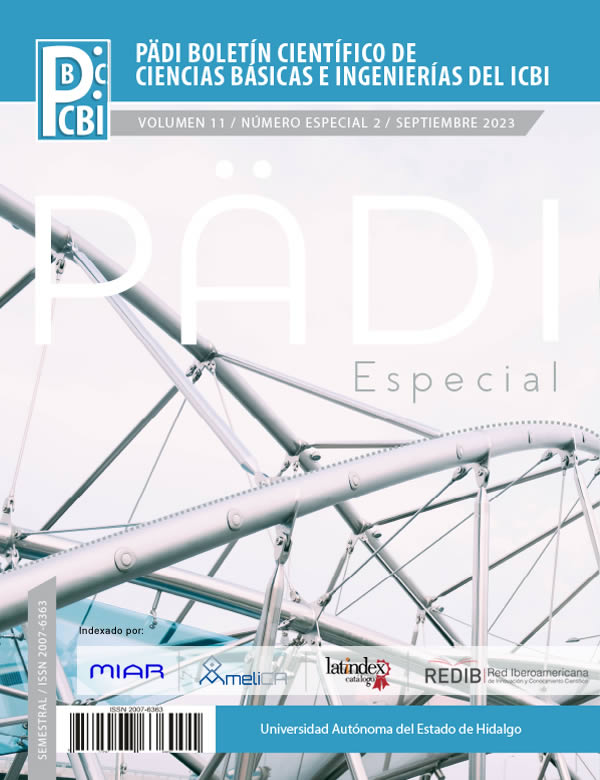Trajectory generation and nonlinear control applied to wheeled mobile robots using Webots and the Autominy autonomous vehicle
Abstract
This paper develops a methodology for designing a reference trajectory and trajectory tracking utilizing Artificial Neural Networks (ANNs) applied to Wheeled Mobile Robots (WMR) through nonlinear control methodologies. For generating the reference trajectories, two ANNs architectures were utilized. These ANNs allow analyzing the environment where the WMR operates, segmenting it, and generating a trajectory using a vision system. Also, two control schemes are studied and implemented via numerical simulations and with a real-time experimental platform. The first controller employs two additional states for generating a dynamic feedback algorithm. The second control methodology uses an observer-based Proportional Integral Derivative (PID) controller. The Webots simulator and the experimental platform Autominy are used to analyze the effectiveness of the trajectory generation procedure, as well as that of the control algorithms. The numerical simulations and experimental results show the effectiveness and efficiency of the proposed methodologies.
Downloads
References
(2023). Autominy. AutoMiny/AutoMiny: Software stack based on ROS for the AutoMiny model cars.
(2023). Simulating your robots with webots. https://cyberbotics.com/webots, Cyberbotics.
Alomari, K., Mendoza, R., Goehring, D., y Rojas, R. (2021). Path following with deep reinforcement learning for autonomous cars. Proceedings of the 2nd International Conference on Robotics, Computer Vision and Intelligent Systems - Volume 1: ROBOVIS, SciTePress.
Dat, V., Bao, N., y Hung, P. (2022). Hybridnets: End-to-end perception network. arXiv, https://arxiv.org/abs/2203.09035, Creative Commons Attribution 4.0 International.
Davy, N., De, B. B., Stamatios, G., Marc, P., y Van, G. L. (2018). Towards end-to-end lane detection: an instance segmentation approach. 2018 IEEE Intelligent Vehicles Symposium (IV).
Fisher, Y., Haofeng, C., Xin, W., Wenqi, X., Yingying, C., Fangchen, L., Vashisht, M., y Trevor, D. (2020). Bdd100k: A diverse driving dataset for heterogeneous multitask learning. 2020 IEEE/CVF Conference on Computer Vision and Pattern Recognition (CVPR).
Hyung, L. M., Gyu, P. H., Hee, L. S., Sup, Y. K., y Soo, L. K. (2013). An adaptive cruise control system for autonomous vehicles. International Journal of Precision Engineering and Manufacturing.
Khalil, H. K. (2014). Nonlinear control. Pearson Education Limited.
Kramer, J., Scheutz, M., Kramer, J., Scheutz, . M., y Scheutz, M. (2007). Development environments for autonomous mobile robots: A survey. http://smart.informatik.uni-ulm.de/MIRO/.
Lee, M. H., Park, H. G., Lee, S. H., Yoon, K. S., y Lee, K. S. (2013). An adaptive cruise control system for autonomous vehicles. Internatioal Journal of precision engineering and manufacturing.
Liu, D., Tang, M., y Fu, J. (2022). Robust adaptive trajectory tracking for wheeled mobile robots based on gaussian process regression. Systems and Control Letters.
Lu, Q., Chen, J., Wang, Q., Zhang, D., Sun, M., y Su, C. Y. (2022). Practical fixed-time trajectory tracking control of constrained wheeled mobile robots with kinematic disturbances. ISA Transactions.
Luca, A. D., Oriolo, G., Samson, C., y Laumond, J.-P. (1998). Feedback control of a nonholonomic car-like robot robot motion planning and control feedback control of a nonholonomic car-like robot. Lectures Notes in Control and Information Sciences.
Miranda-Colorado, R. (2022). Observer-based proportional integral derivative control for trajectory tracking of wheeled mobile robots with kinematic disturbances. Applied Mathematics and Computation.
Park, J. H., Kim, S. H., y Park, T. S. (2019). Asymptotically convergent switching differentiator. International Journal of Adaptive Control and Signal Processing.
Rosas-Vilchis, A., de Loza, A. F., Aguilar, L. T., Cieslak, J., Henry, D., y Montiel-Ross, O. (2020). Trajectory tracking control for an autonomo vehicle using a decoupling approach. 2020 28th Mediterranean Conference on Control and Automation (MED).
TuSimple, A. (2022). Tusimple-benchmark. https://github.com/TuSimple/tusimple-benchmark.
Yoo, S. J. (2013). Adaptive neural tracking and obstacle avoidance of uncertain mobile robots with unknown skidding and slipping. Information Sciences.
Zequn, Q., Huanyu, W., y Xi, L. (2020). Ultra fast structure-aware deep lane detection. Computer Vision – ECCV 2020, Springer International Publishing, 276–291, available at https://github.com/cfzd/Ultra-Fast-Lane-Detection.
Copyright (c) 2023 Jesús Abraham Rodríguez-Arellano, Víctor Daniel Cruz-Lares, Roger Miranda-Colorado, Luis Tupak Aguilar-Bustos

This work is licensed under a Creative Commons Attribution-NonCommercial-NoDerivatives 4.0 International License.














